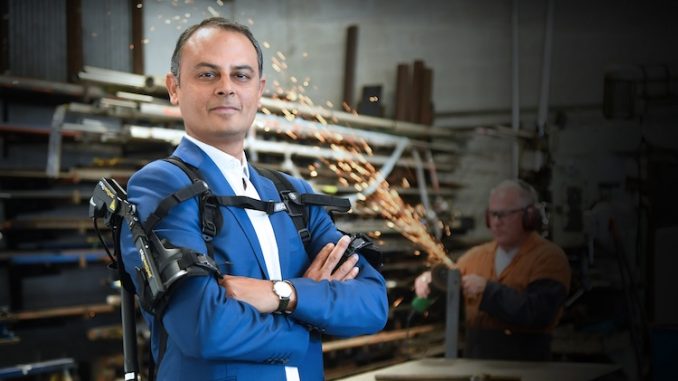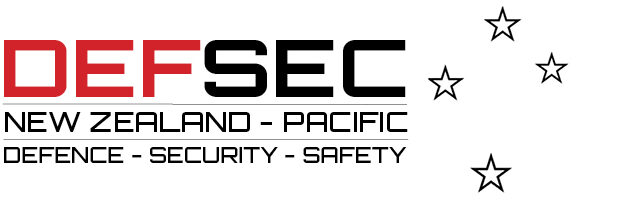
Kiwi company Exxovantage is deploying wearable robotic solutions and technology that could save Kiwi businesses from losing money to workplace injuries while future-proofing their workforces.
In the current climate of stark skill shortages, lost time to injuries, and a focus on the mental health of the nation’s workforce, supporting manual labour tasks with robotics and data analytics may reduce the cost of staff turnover and close the skills gap — while boosting staff engagement and productivity.
That’s according to Exxovantage, a New Zealand company combining exoskeletons and exosuits, workplace wearables, AI, data analytics and cutting-edge risk management tools to increase operational efficiencies across a range of critical sectors of the economy.
Arnaud Daurat, Founder and Global CEO of Exxovantage, says that supportive structures worn on the body to relieve strain on the musculoskeletal system are the way of the future.
“Worldwide, the use of exoskeletons for rehabilitation purposes has grown,” he said. “With an increase in the number of people with physical disabilities and our ageing workforce, it’s common sense that ergonomic support is used to prevent repetitive stress injuries.
“Our objective is zero harm, to allow workers to perform their daily tasks without injury or musculoskeletal disorders.”
Daurat says Exxovantage solutions have been proven to reduce injury-causing bends by 75%, sprains and strains by 30%, downtime due to injury by 25%, and absenteeism by 25% while increasing staff attraction and retention by 20% and productivity by 16%. With musculoskeletal disorders (MSDs) accounting for almost a quarter of all sick days in New Zealand, the technology has big potential.
“With biomechanical augmentation, we can enhance what people can do with their natural abilities. Exoskeletons support the upper limbs of the wearer, using their strength and saving energy when in motion.”
Passionate about offering organisations workforce solutions based around predictive injury prevention, Daurat works with them early to undertake audits of internal processes and give workers access to wearable devices that inform them of health and safety issues before they happen.
“Our wearable devices are embedded with built-in sensors that keep track of body movements and provide real-time biometric data to help highlight risks to a person’s health due to impacts such as repeated movements and posture at work.
“These devices alert them to efficiencies and flag if they are too close to a hazard. They will even flag dehydration, reminding people to increase their water consumption while working.”
While the deployment of wearables has started to take off in New Zealand, globally, Daurat notes that their manufacturer has already distributed 150,000 wearables to the world’s largest e-Commerce organisation, with an additional 400 warehouses to receive the technology.
Scaffolding support
Auckland business, Wrapid Man, specialises in commercial and residential shrink wrapping. Their team has consistently been wearing Exoskeleton HAPO back exoskeletons for the last three months since participating in an onsite audit and fitting by Exxovantage.
Director Christo Botha says that while his team were keen to adopt the technology from the start, they were thrilled to see the positive difference the exoskeletons have made in their job – citing increased endurance and a quicker recovery from the day’s work after wearing the supportive structure.
Botha discovered the products at a scaffolding conference and was intrigued to discover a potential solution for reducing the risk of injuries in his team.
“It’s a manual job; it’s hard on your knees and back. We’re lifting heavy materials and do a huge amount of crouching down. The guys tell me wearing it helps to reduce fatigue and gives them strength to stand up from kneeling.”
Surgery applications
An Auckland-based oral and maxillofacial surgeon backs up Botha’s experience. After injuring his back in a sporting accident years ago, the surgeon wanted to learn more about the support gained from wearing an exoskeleton.
“It’s an occupation that requires a great deal of leaning over and working in a strained position,” said the doctor.
After trialling an exoskeleton in his everyday work and during surgeries, he found it a good tool to reduce the wear and tear on his back. Comfortable to wear and taking the strain off his back, he plans to keep using his exoskeleton, believing they have a future in his industry.
Meat worker relief
The meat processing industry is plagued with high absenteeism and injuries due to the physical nature of the job.
Brittany McCauslin works for an Otago-based meat processing business. She led the procurement of different models of exoskeletons after seeing them presented at a Meat Industry Association research and innovation workshop.
“Trialling a few exoskeletons from the Exxovantage range made sense. We want to give our staff longevity in the industry and help injured people return to work,” she said.
During an initial trial with the exoskeletons, McCauslin learnt that one staff member, an older team member with a physically demanding role, was already wearing a back support brace. After one day of trials, he could retire his back brace and fully adopt an exoskeleton.
Dubbed the next generation of integrated solutions and technologies, exoskeletons and exosuits can increase the wellbeing of their wearers, something Brittany was motivated to achieve for their business.
“One of our team found, after using an exoskeleton for one session of 135 minutes, that same night, they had the best sleep in years,” she said. “Their usual tossing and turning from back pain was absent.”
The Exxovantage business has expanded to Australia, the USA, Africa and Singapore, with bold plans to become the global leader in wearable robotics technology.
Daurat is excited about the business’ innovation pipeline and what it means for humankind.
“We are solving human, technical, and business challenges to increase productivity and staff wellbeing. It’s a privilege to partner with sectors and businesses to protect their most important asset – their people.”





